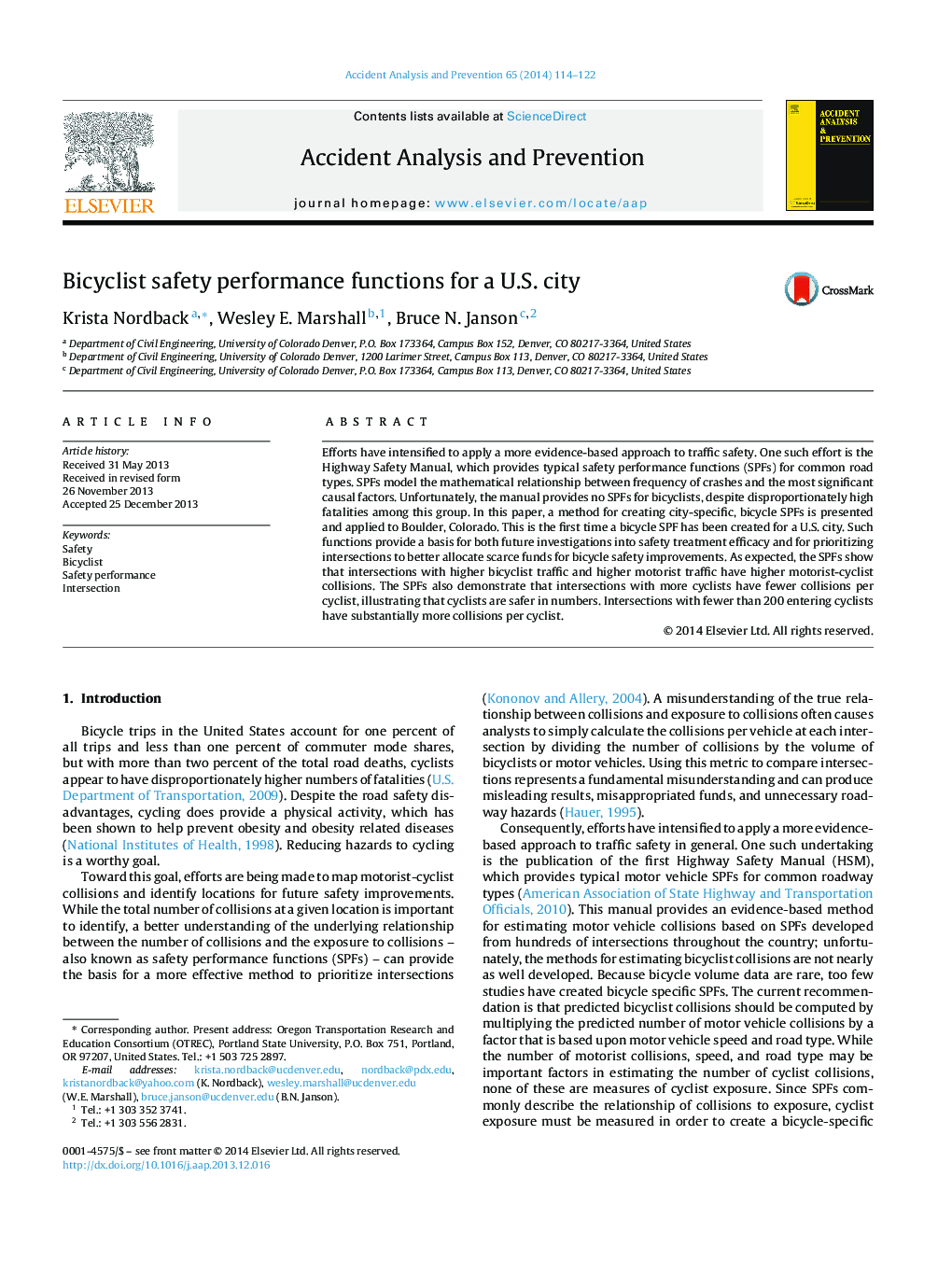| Article ID | Journal | Published Year | Pages | File Type |
|---|---|---|---|---|
| 6965980 | Accident Analysis & Prevention | 2014 | 9 Pages |
Abstract
Efforts have intensified to apply a more evidence-based approach to traffic safety. One such effort is the Highway Safety Manual, which provides typical safety performance functions (SPFs) for common road types. SPFs model the mathematical relationship between frequency of crashes and the most significant causal factors. Unfortunately, the manual provides no SPFs for bicyclists, despite disproportionately high fatalities among this group. In this paper, a method for creating city-specific, bicycle SPFs is presented and applied to Boulder, Colorado. This is the first time a bicycle SPF has been created for a U.S. city. Such functions provide a basis for both future investigations into safety treatment efficacy and for prioritizing intersections to better allocate scarce funds for bicycle safety improvements. As expected, the SPFs show that intersections with higher bicyclist traffic and higher motorist traffic have higher motorist-cyclist collisions. The SPFs also demonstrate that intersections with more cyclists have fewer collisions per cyclist, illustrating that cyclists are safer in numbers. Intersections with fewer than 200 entering cyclists have substantially more collisions per cyclist.
Related Topics
Physical Sciences and Engineering
Chemical Engineering
Chemical Health and Safety
Authors
Krista Nordback, Wesley E. Marshall, Bruce N. Janson,
